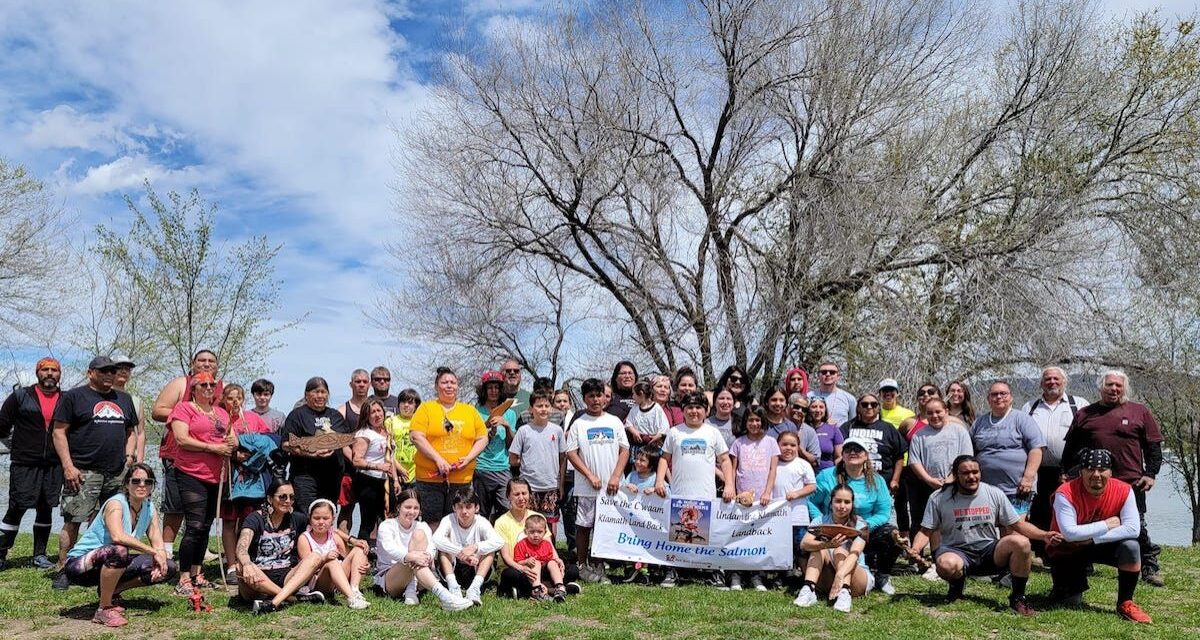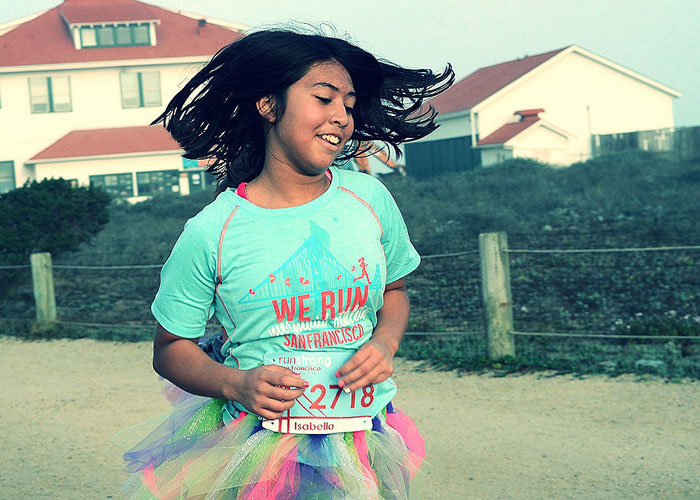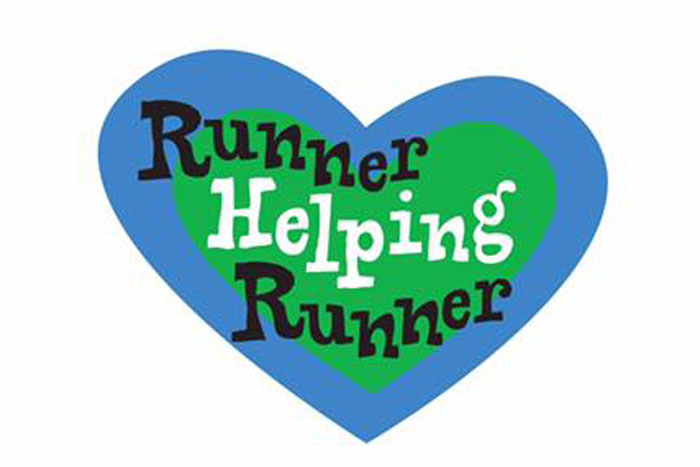- Tahoe’s Nevada Beach Tops the List of Hard-to-Book Campgrounds - 07/17/2024
- Cannabis Watershed Protection Program Cleans Up Illegal Grow Sites - 07/10/2024
- French Fire - 07/05/2024
Tribes along the Klamath River prepare to celebrate the 20th anniversary of the Salmon Run
By Jarrette Werk
For more than 120 years, dams have had a chokehold on one of the most diverse watersheds in the western United States, the Klamath River. Two decades ago, a group of Hoopa Valley High School students organized a community run to bring awareness to the harmful impacts the dams have on the river after tens of thousands of fish perished due to drought, low flows, water diversions and water pollution the year prior.
Poor water management coupled with the dams’ negative influence on river conditions, led to the catastrophic disease outbreak of 2002, which killed upwards of 70,000 adult salmon that were attempting to spawn.
“Nobody in our lifetime had seen something like that happen, where so many fish died before they ever got to spawn,” Dr. Kayla Begay, Assistant Professor of Native American Studies at Cal Poly Humboldt, said.
That following spring, Begay and Tasha James, both citizens of the Hoopa Valley Nation and of Yurok and Karuk descent, joined forces with two other Hoopa Valley High School freshman — Erica Chase and Chelsea Reed. Their common denominator was a shared connection to the water and a love for the fish.
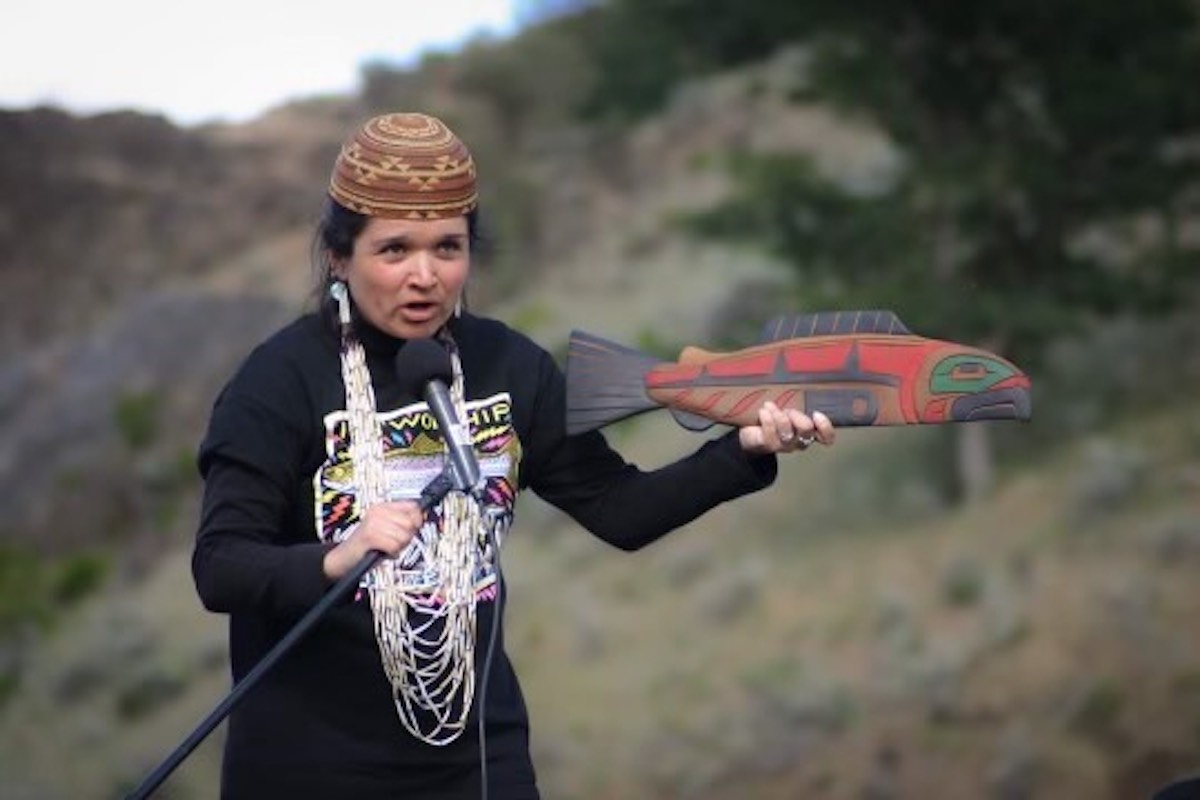
Melodie George-Moore, Hoopa Valley Tribe, speaks to a group of runners about saving the salmon. Photo by Mo Hollis
“The connection to the river runs in our blood,” James, TANF (Temporary Assistance for Needy Families) Program Manager for the Yurok Tribe, said. “Look at your hand. Look at your veins. That is a resemblance to the rivers that we come from. To see something so personal, and something we are so connected to just dying, ultimately, we knew we had to do something.”
Under the supervision of Margo Robbins, then an adviser for the Hoopa High School Water Protectors Club, the group of women sprung into action organizing the inaugural Salmon Run in 2003.
Citizens of the Klamath, Karuk, Hoopa Valley and Yurok Tribes then launched a far-reaching campaign to remove the lower four Klamath River dams in hopes to heal the water and bring the salmon home.
For four days, from May 18-21, the four tribes will celebrate the Salmon Run’s 20th anniversary by making the 340+ mile journey from the mouth of the river at the California coast, maneuvering up to the headwaters in Oregon.
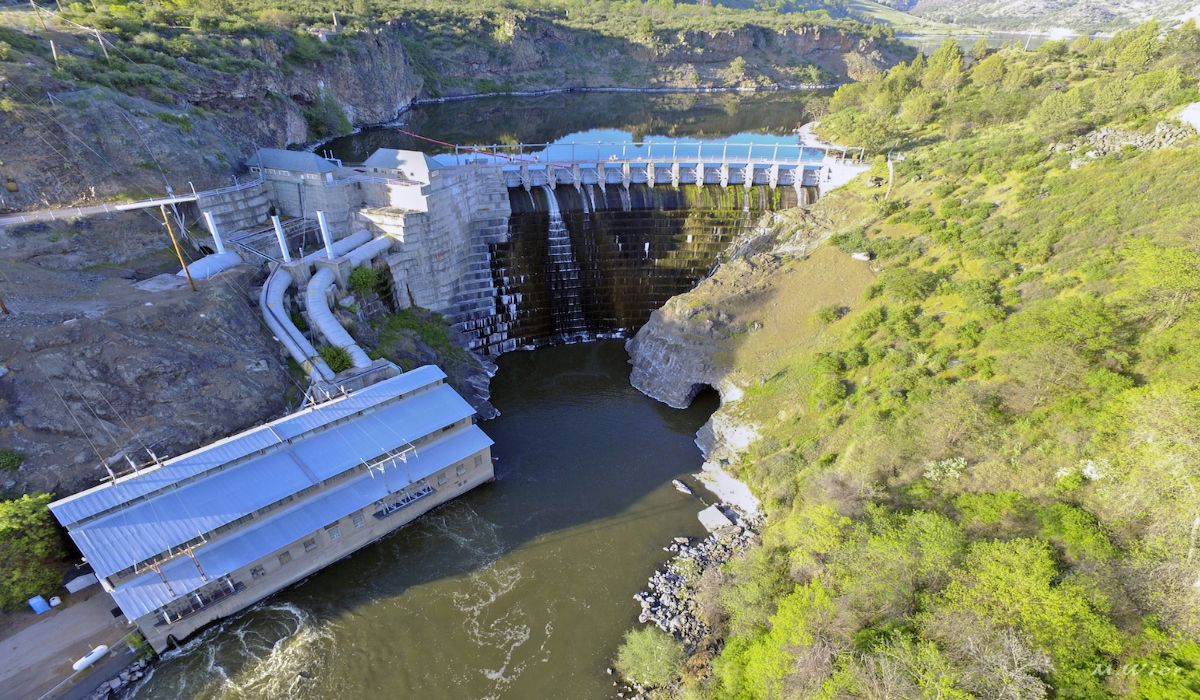
Aerial images of Copco No. 1 Dam. Photo by Michael Weir/CalTrout
“This year is actually going to be the last official year that all four of the dams are still going to be standing,” said Crispin McAllister, former Karuk Tribal Councilman and avid runner. “One of the dams is coming down for sure this year and the other three are supposed to come down next year.”
This month, deconstruction preparation work is underway. This work was approved as part of the Klamath Hydroelectric Settlement Agreement, a historic cooperative agreement that included state agencies, Tribal representatives, and PacifiCorp, the company that owns the dams. From these signatories formed the Klamath River Renewel Corporation, the non-profit body that oversees the dam dismantling.
Work on the dams will begin this summer, starting with Copco 2. The Federal Energy Regulatory Commission approved the $450 million dam removal project in November of 2022. The first dam will be removed by September 2023. The other three dams will be removed by the end of 2024, making it the largest dam removal project in the world.
The lower Klamath River will flow free once again, and the salmon will finally come home.
FISH KILL
For thousands of years the Klamath, Karuk, Hoopa Valley and Yurok Tribes have inhabited the upstream portion of the Klamath River watershed, relying on salmon as one of their first traditional foods.
Long before European settler contact, salmon runs united Klamath communities up and down the Basin. Today, the four tribal nations unite to save the fish that have provided for their people for thousands of years.
In recent decades, tribes witnessed the river’s health decline but not without putting up a fight. Tribal citizens of the Klamath Basin have battled in courtrooms and appeared before government agencies to protect the sacred fish, as well as their ways of life.
In 2001, the federal government slashed water allotments to farms in an attempt to protect the salmon and other endangered fish species. Months later, in 2002 nearly 70,000 adult salmon died in the catastrophic and traumatic fish kill that was the catalyst of the Salmon Run.
This tragic event was a result of drought, low water levels and water diversions to Klamath Basin farmers and ranchers. That combination was a breeding ground for bacteria and other toxins, which affected the fish’s gills, ultimately leading to their untimely death.
In 2004, PacifiCorp filed an application to relicense the Klamath Project. In response, Tribal members started a grassroots campaign with the valiant goal of removing the lower four Klamath River dams – the largest river restoration effort in US history.
Between 1903 and 1962, PacifiCorp’s Klamath Hydroelectric Project constructed seven dams along the river. The Klamath Hydroelectric Settlement Agreement now calls for the four lower dams: Iron Gate, Copco No. 1, Copco No. 2, and J.C. Boyle, to be decommissioned.
A CALL FOR PRAYER AND ACTION
The long awaited decision was a major step in restoring hundreds of miles of salmon spawning habitat that had been blocked by dams on the lower Klamath River for generations. Advocates say it is a direct result from people stepping up to speak for those who do not have a voice.
“I’ve always been an advocate for our water, and our fish, and our land,” Annelia Hillman said.
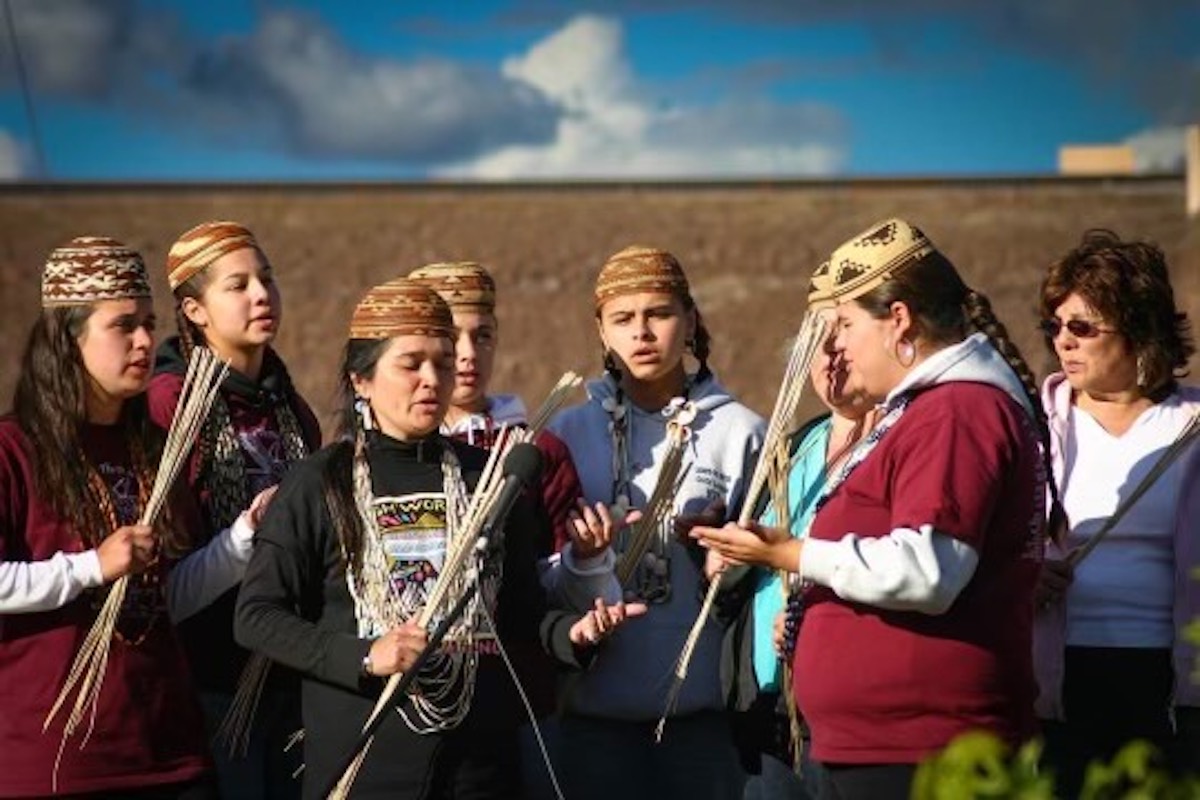
Kayla Begay, Erika Tracy, Melodie George-Moore, Natalie Scott, Jesika Sheaf, Lois Risling, Tasha James, and Marcellene Norton gather for a Salmon Run prayer ceremony. Photo by Mo Hollis
Hillman, a citizen of the Yurok Nation, has done activism work on the river in relation to dam removal and participated in the Salmon Run since its inception. She now serves as a key principal organizer for the annual run and a Food Village Coordinator for Yurok Tribe.
According to Hillman, the decision to raise awareness of the harmful impacts the dams have on the river, fish and people was sparked by the youth created movement all those years ago.
“It was their idea and their vision of what could happen and how to bring awareness to the state of the Klamath River,” Hillman said. “What happened to our salmon called for prayer and action.”
Hillman said the run, centered in prayer, is a celebration of the collective efforts to heal the river and the communities that live along it. The goal is that wild salmon will once again return to the upper Klamath Basin.
Today, the run has grown from a school-led activity to a multi-day 340+ mile long run, which is broken up into one mile increments. This allows participants from all ages and abilities to join in on this historic movement.
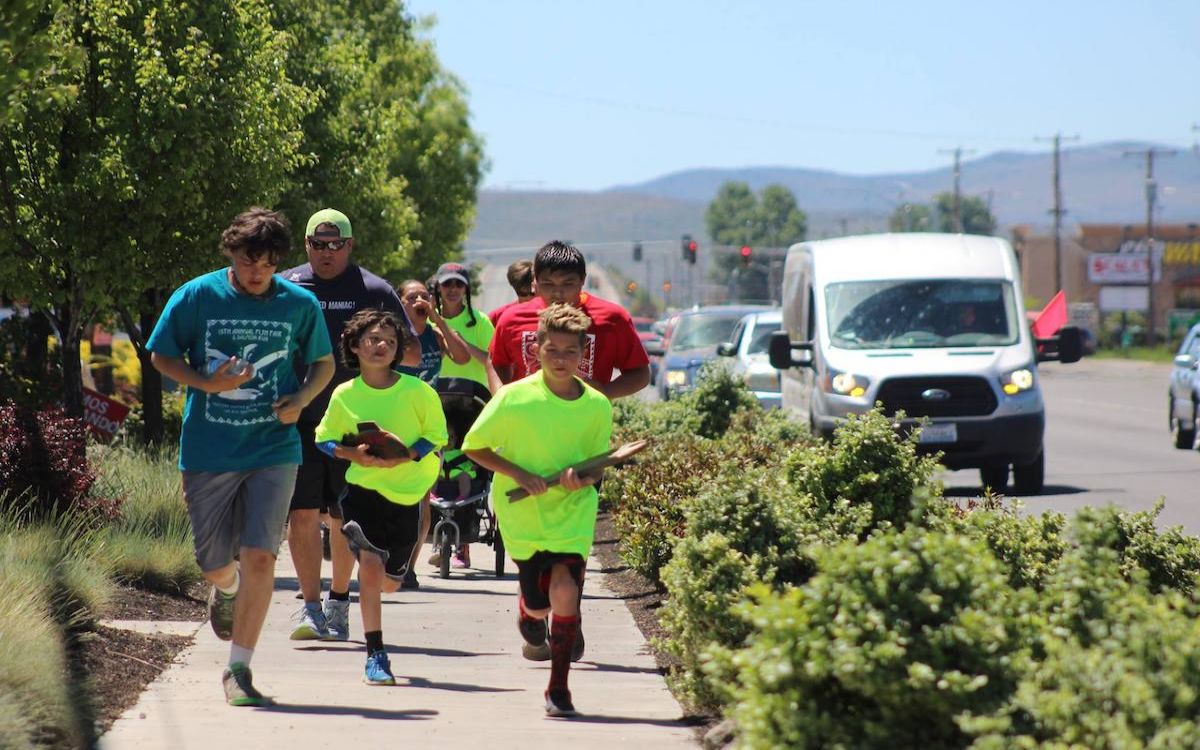
Runners of all ages participate in the annual run, 2017. Photo by Normajean Cummings.
Each community takes turns organizing their section of the run through their traditional villages, which provides an opportunity for people to represent their distinct tribes.
Normajean Cummings has been helping organize on the logistical side for the past eight years. She says this year is projected to be the largest gathering yet.
“This year we’re planning between 1,000 and 1,200 runners total,” Cummings said.
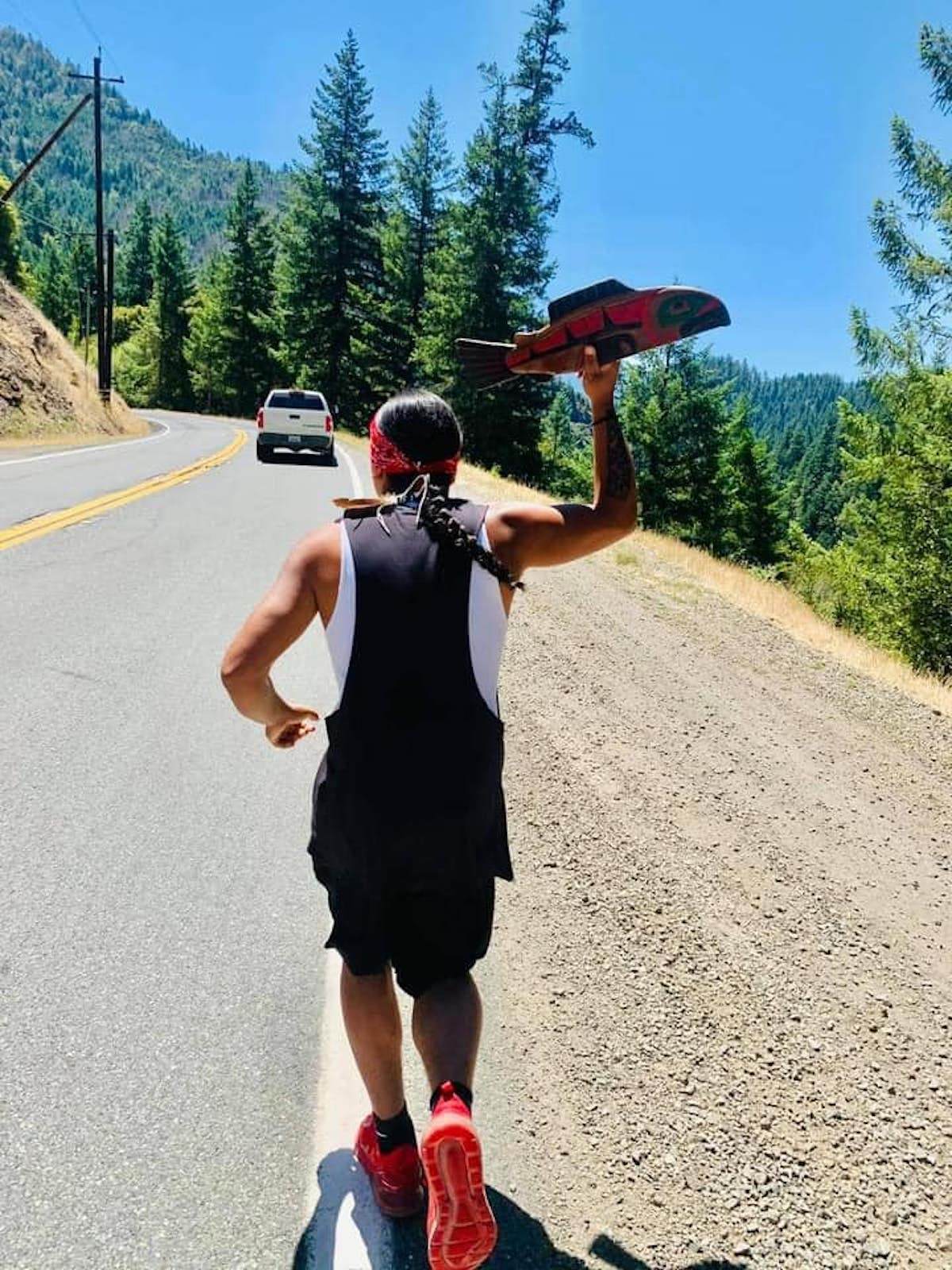
Runners carry a wooden carved fish and pray as they complete their portion of the run. Photo by Annelia Hillman
Runners take turns carrying wooden carved fish and praying as they complete their portion of the run, before passing the fish along to the next person. The carved fish batons are a symbol of the long anticipated return of the salmon.
“We’re not just praying for ourselves and for our tribes,” Cummings said. “We’re praying for all of the communities that we run through. And to me, that’s huge.”
The salmon runners are such a strong community and bring much needed energy and excitement back into the communities year after year, she said.
As one of the first to organize the inaugural run twenty years ago, Begay says she finds joy in seeing new generations of youth activists and youth leaders take on these roles to keep the movement alive and is excited to see how the run will evolve.
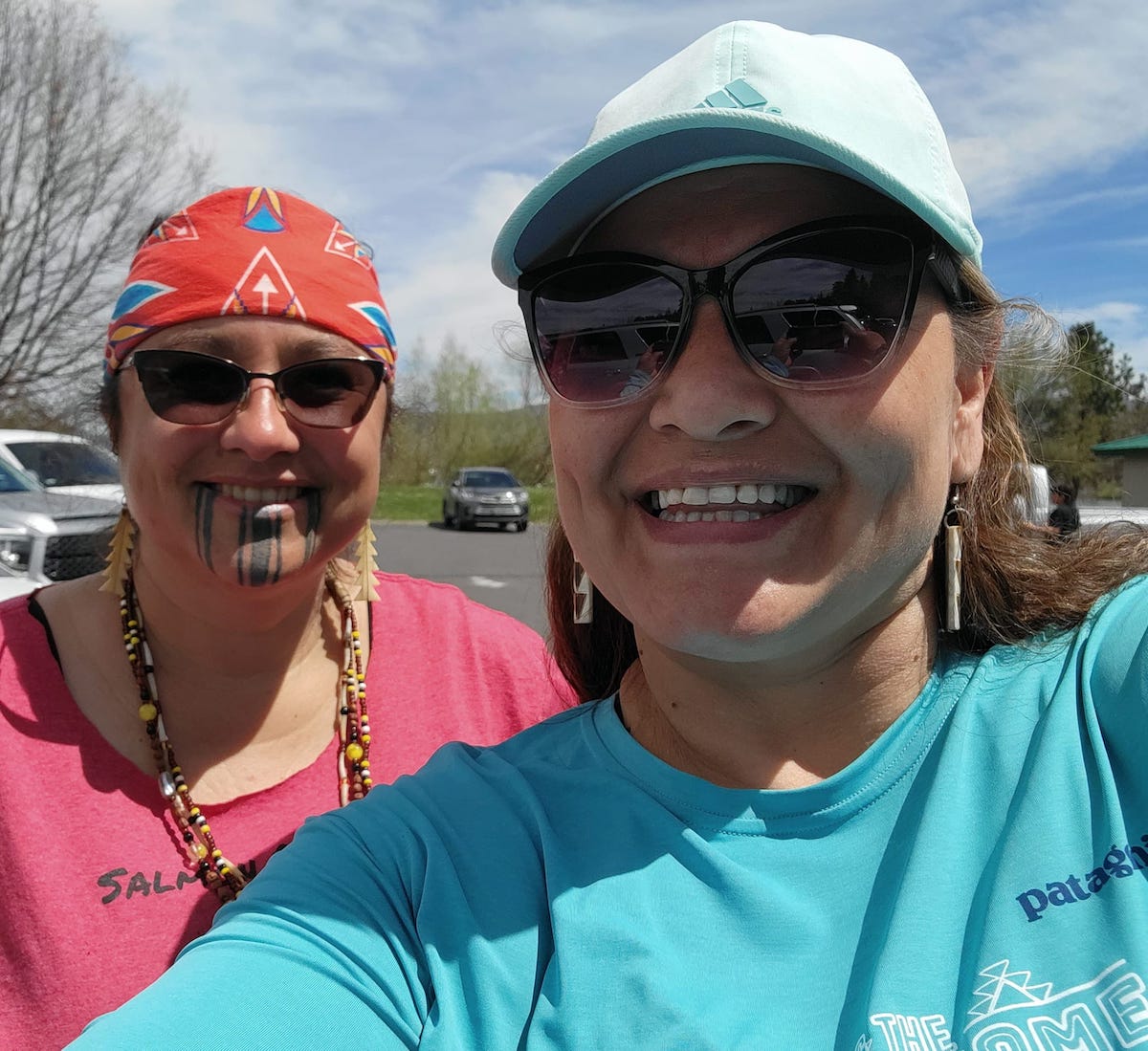
Annelia Hillman and Normajean Cummings both volunteer their time to help organize the annual Klamath River Salmon Run. Photo by Normajean Cummings
“It has never stopped being tied to youth,” Begay said. “I see young people from our community speaking up and still speaking for salmon and going into protests and using their voice to raise awareness.”
Organizers said that just because this is the last year the dams will be in use, doesn’t mean the run will come to an end.
“We’re not going to stop,” McAllister said. “We’re going to keep doing this and it’s going to turn into something different afterwards, because the salmon are always going to be on our agenda, to see a full healthy recovery for them.”
Jarrette Werk, a citizen of the Aaniiih and Nakoda Nations, is an Indigenous Affairs reporter and photographer for Underscore News.
Join the Klamath River Salmon Run group on Facebook to learn how you can get involved.
***
Main image: Lunch break at Moore Park in Klamath Falls, 2022 (Taylor Tupper)
Read other current issues here.

